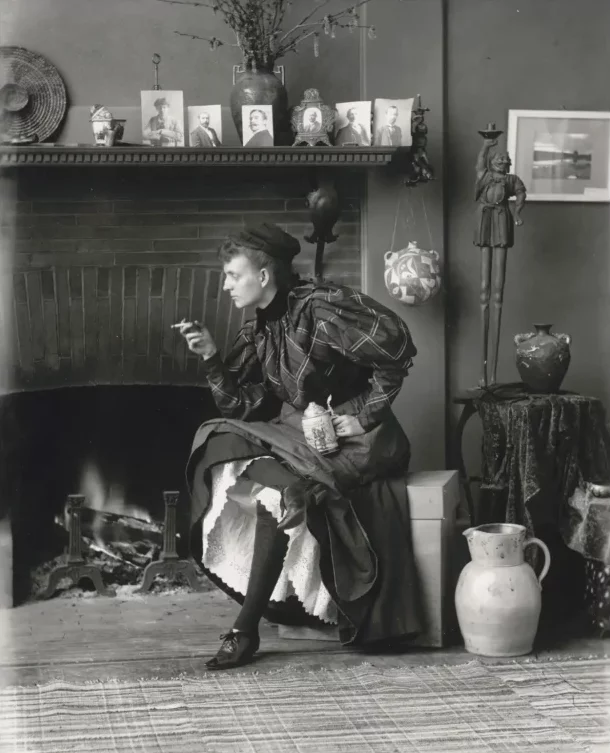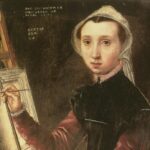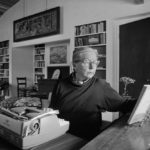
Editor’s Note: In honor of Women’s History Month, we’re sharing profiles of remarkable women in art we think you should know (if you don’t already).
What do Booker T. Washington, Susan B. Anthony, Mark Twain and at least 5 U.S. presidents all have in common? They were all photographed by Frances B. Johnston.
Though not a household name today, Johnston stands out as the first official White House photographer – a post she maintained for five presidencies, starting with Grover Cleveland, during a time when women didn’t yet have the right to vote. She also photographed celebrities and socialites, the rich and the famous. But she traveled extensively throughout America and took pictures of indigenous communities and Black communities, bringing people who were not traditionally photographed into the light.
Johnston was born to a wealthy Washington, D.C., family in 1864. Her mother, Frances Antoinette Benjamin Johnston, was a journalist who covered Congress – one of the first women in the country to do so. In her early 20s she was gifted a camera by family friend George Eastman, the founder of Eastman Kodak Co., which would be a little bit like being gifted your first sewing machine from Karl Lagerfeld. She also learned how to work in a darkroom from Thomas Smillie, who was the director of photography at the Smithsonian. To say she learned from the best is perhaps an understatement.
But Johnston took her photography skills seriously, and eventually opened her own portrait photography studio in D.C. in 1894. Using her family connections she began taking portraits, from Alice Roosevelt on her wedding day to Admiral George Dewy on the deck of the U.S.S. Olympia. Her work became well known throughout the capital city, landing her the White House gig. It’s hard to think of a more prestigious appointment for a female photographer in the late 19th century.
In 1899, Johnston was commissioned to photograph the Hampton Normal and Agricultural Institute (today known as Hampton University) a historically Black university in Virginia. Johnston’s photographs of students studying, learning and attending lectures won her wide acclaim. In a post-Civil War America, where segregation was strictly enforced, Johnston’s photographs document an entire world that white America was probably pretty ignorant of: a prestigious university filled with students, who just so happened to be Black. The photos were shown in Paris and even St. Petersburg and Moscow.
One of her most famous photos is a cheeky self-portrait titled “New Woman,” in which she sits by a fireplace, smoking a cigarette while holding a beer stein. One leg is crossed over the other, revealing her petticoats. It might not seem particularly shocking today, but back then a woman wouldn’t dream to appear this way in public, no less document it. This was, after all, the seated pose of man – smoking, drinking, and thinking whatever important male thoughts he might be thinking.
In 1897, she wrote an article for Ladies Home Journal titled, “What a Woman Can Do with a Camera.” In it, Johnston not only makes the obvious case for female photographers, but for women to work and support themselves. In a quote that perfectly captures her feminist ethos, she writes, “The woman who makes photography profitable must have, as to personal qualities, good common sense, unlimited patience to carry her through endless failures, equally unlimited tact, good taste, a quick eye, a talent for detail, and a genius for hard work.”
In addition to all her many other accolades, it appears Johnston might also have been the first to give other women career advice in a national magazine. A legend indeed. ◼
Victoria Flexer, author of “A History of the World in Ten Dinners,” received her master’s degree in historical studies from The New School. She specializes in sharing history through food, art and culture.



